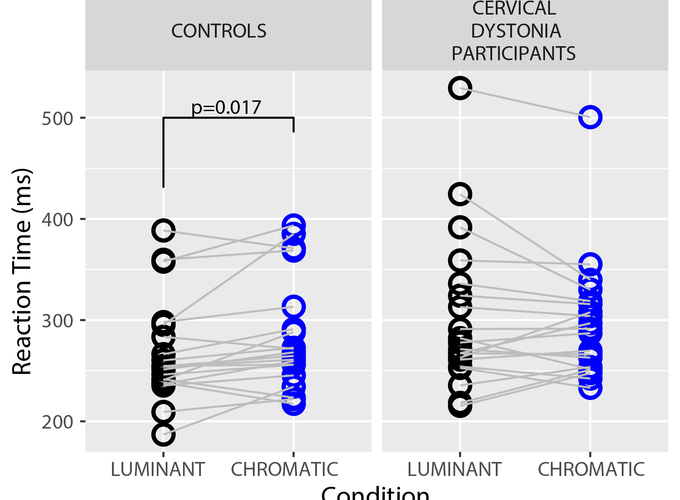Slowed luminance reaction times in cervical dystonia: disordered superior colliculus processing

Slowed luminance reaction times in cervical dystonia: disordered superior colliculus processing
Abstract
Background Abnormal temporal discrimination in cervical dystonia is hypothesized to be attributable to disrupted processing in the superior colliculus. The fast, luminance-based, retinotectal pathway, projects to the superior colliculus; chromatic stimuli responses, by the retino-geniculo-calcarine pathway, are up to 30 ms longer. Objectives We sought to interrogate visual processing and reaction times in patients with cervical dystonia compared with healthy controls. We hypothesized that cervical dystonia patients would have impaired reaction times to luminance based stimuli accessing the retino-tectal pathway in comparison to healthy control participants. Methods In 20 cervical dystonia and 20 age-matched control participants, we compared reaction times to two flashing visual stimuli: (1) a chromatic annulus and (2) a luminant, noncolored annulus. Participants pressed a joystick control when they perceived the annulus flashing. Results Reaction times in control participants were 20 ms significantly faster in the luminant condition than the chromatic (P = 0.017). Patients with cervical dystonia had no reaction time advantage in response to the luminant stimulus. Conclusion Cervical dystonia patients (compared to control participants) demonstrated no reduction in their reaction time to luminant stimuli, processed through the retinotectal pathway. This finding is consistent with superior colliculus dysfunction in cervical dystonia.